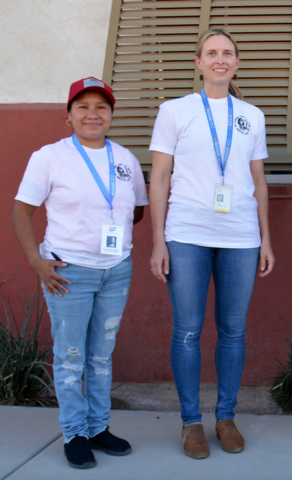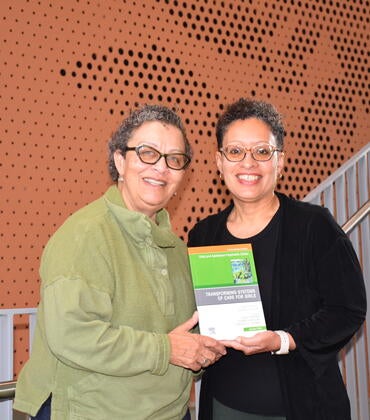
In the United States, low-income immigrant and minority children often live in environments that have highly polluted air. A study led by researchers at the University of California, Riverside, demonstrates this among the Latinx and Purépecha immigrant children and caregivers living along Inland Southern California’s Salton Sea, a highly saline drying lakebed surrounded by agricultural fields. The Purépecha community is an Indigenous group from the Mexican state of Michoacán.
“Children of Latinx and Indigenous Mexican immigrant families living near the Salton Sea are especially vulnerable to the sea’s environmental impact on chronic health conditions,” said Ann Marie Cheney, an associate professor of social medicine, population, and public health in the School of Medicineand lead author of the study. “Our study uniquely focuses on caregivers’ understanding of the Salton Sea’s impact on the health of children diagnosed with asthma or chronic respiratory health problems.”
According to Cheney, caregivers offer a unique perspective of Salton Sea impacts on children’s health conditions as they pay attention to the environment and climatic changes, anticipating how they will affect child health.
“While they intimately understand children’s vulnerabilities to environmental and climatic conditions, they often do not have a platform to advocate for their children,” she said. “Through research, we can elevate their voices, what they understand in terms of the effects of the environment on health, and advocate for change to public health policy.”
Cheney and her team engaged with 36 people who participated in either focus groups or one-on-one interviews. Participants lived in the northern part of the Salton Sea and were Latinx and Indigenous Mexican caregivers of children with asthma and respiratory problems. The study, which used principles of community-based participatory research, was from fall 2019 to spring 2021.
Participants characterized the Salton Sea’s environment as toxic. They said it included sulfuric smells, dust storms, chemicals, and fires, which contribute to children’s chronic health conditions, including respiratory illnesses such as asthma, bronchitis, and pneumonia.
In the interviews, participants
- shared that during the hot summer months, the Salton Sea emits sulfuric smells, affecting children’s health
- noted that dust storms are pronounced during the hot summer months and increase respiratory symptoms and allergies, such as irritated and watery eyes, in children
- expressed concern about children’s exposure to agricultural chemicals from the nearby agricultural fields
- worried about local agricultural practices in which growers dump chemicals into the Salton Sea
- talked about the burning of garbage on nearby tribal lands and its effects on air quality
- explained how daily exposure to the Salton Sea environment contributed also to allergies and nosebleeds
- noted that when they remove their children from the Salton Sea’s environment, their symptoms improve.
“Our study has important public health implications for vulnerable child populations,” Cheney said. “The Salton Sea and its effects on the children and families living along its border offer a preview into what is to come in the next several decades because of climate change. Without intervention, children, such as those in our study, will be especially vulnerable to respiratory health consequences of climate change and the effects of poor air quality on health.”
The research paper, titled “Latinx and Indigenous Mexican Caregivers’ Perspectives of the Salton Sea Environment on Children’s Asthma, Respiratory Health, and Co-Presenting Health Conditions,” appears in the International Journal of Environmental Research and Public Health.
Cheney was joined in the study by Gabriela Ortiz, Ashley Trinidad, Sophia Rodriguez, Ashley Moran, and Jaír Chavez of UCR; Andrea Gonzalez of UCLA; and María Pozar of Conchita Servicios de la Comunidad in Mecca, California.
The study was funded by the National Institute on Minority Health and Health Disparities of the National Institutes of Health. The content of this article does not necessarily represent the official views of the National Institutes of Health.
Header image credit: PeopleImages, iStock/Getty Images Plus.





